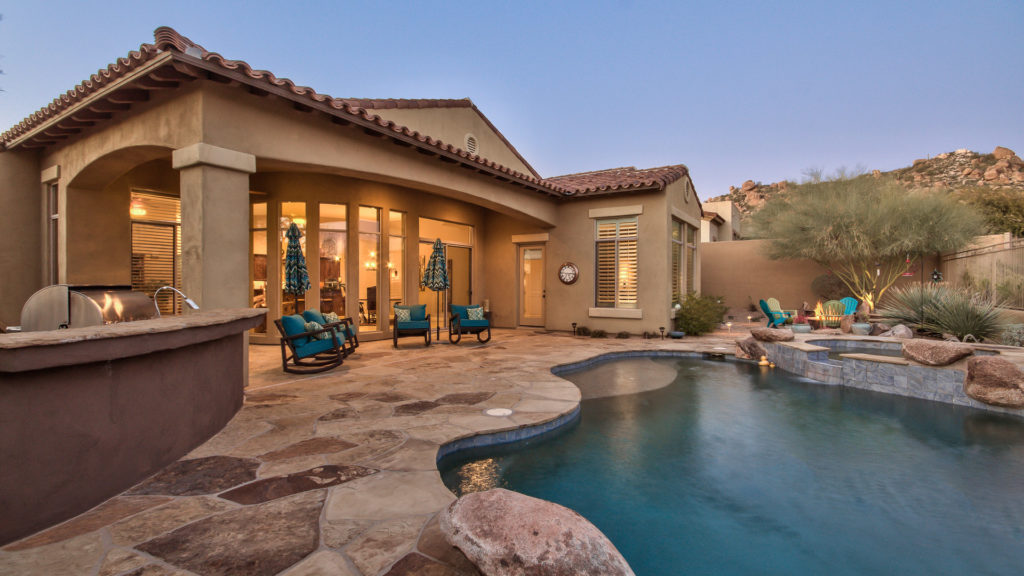Swimming Pool Maintenance Tips
With the temperatures getting close to triple digits, the swimming pool is looking more enticing than ever. Here are some simple ways to get your pool ready for summer and save a little money in the process.
Clean your filters.
Think of the filter as your pool’s kidneys. Your pool’s filter is responsible for removing impurities from the water such as bugs, dirt, leaves, and other debris. Cleaning your filters regularly is one of the most important things you can do. You should not only clean out your filter basket each week, but physically take out the filter cartridges out of the filter and hose them down with your garden hose about every three months. You may need to use a more pressurized water spray in order to remove the majority of the dirt.
Pools need consistent chemical levels.
Chemical levels are arguably one of the most important facets of pool maintenance. Improperly balanced water looks murky, irritates skin and eyes, and can cause your pool to become a breeding ground for bacteria. Purchasing a testing kit is definitely a worthwhile investment and easy to do yourself.
According to the Center for Disease Control (CDC), the following chemical levels should be checked at least once a month:
- Cyanuric Acid – Protects chlorine from sunlight and determines the required Free Chlorine level. An ideal reading for outdoor pools is 30 – 50.
- Free Chlorine – A sanitizer which keeps your pool water safe and free of germs.
- Acidity/Alkalinity – Also known as the pH level, acidity needs to be kept between 7.2 – 7.8 to prevent irritation and protect the pool equipment from eroding.
- Total Alkalinity – Helps keep the pH in balance. Levels should at 100, with given parameters within a range of 80 – 120
- Calcium Hardness – Appropriate levels help prevent plaster damage, so aim for 220 – 350.
Running your pool pump during the day could save you money.
Did you know that running your pump at night will cost you more in chemicals than electricity? During the summer, your pool pump needs to be circulating during the hottest time of the day. If you are on a special program with your electric company to be charged more during peak hours, turn the pump off during those hours then turn it right back on. The general rule is to let it run one hour per ten degrees. So, if it’s one hundred degrees out, then it should run about 10 hours a day.
Use a variable speed pool pump.
They may have a high upfront cost, but the savings in electricity costs over a period of time is well worth it. Normal pumps run on high for 8-10 hours per day, but a variable speed pump allows you to reduce how much power you are using. You only run it on high for about two hours a day and then low for the other 8 hours a day.
Keep an eye on the water level.
As important as the chemical composition of the water is, the physical water level is just as important. The levels will naturally fluctuate after a heavy rainstorm or an afternoon of kids doing cannonballs. You want to maintain a level that is halfway up the opening of your skimmer. If the water is too low, simply use a garden hose to add the necessary amount of water back in. When you’ve reached the appropriate water level, remember to recheck the chemicals as the water level fluctuations will have thrown them off balance.
Schedule a yearly service appointment – Whether you think you need it or not.
Sometimes you need to trust an expert, especially when it comes to your pool’s mechanical equipment such as pumps, filters, heating systems, etc. At least once a year, have a pool service professional come out to check your devices. Detecting and fixing a small problem now can save you from having to fix a huge crisis later down the road.


